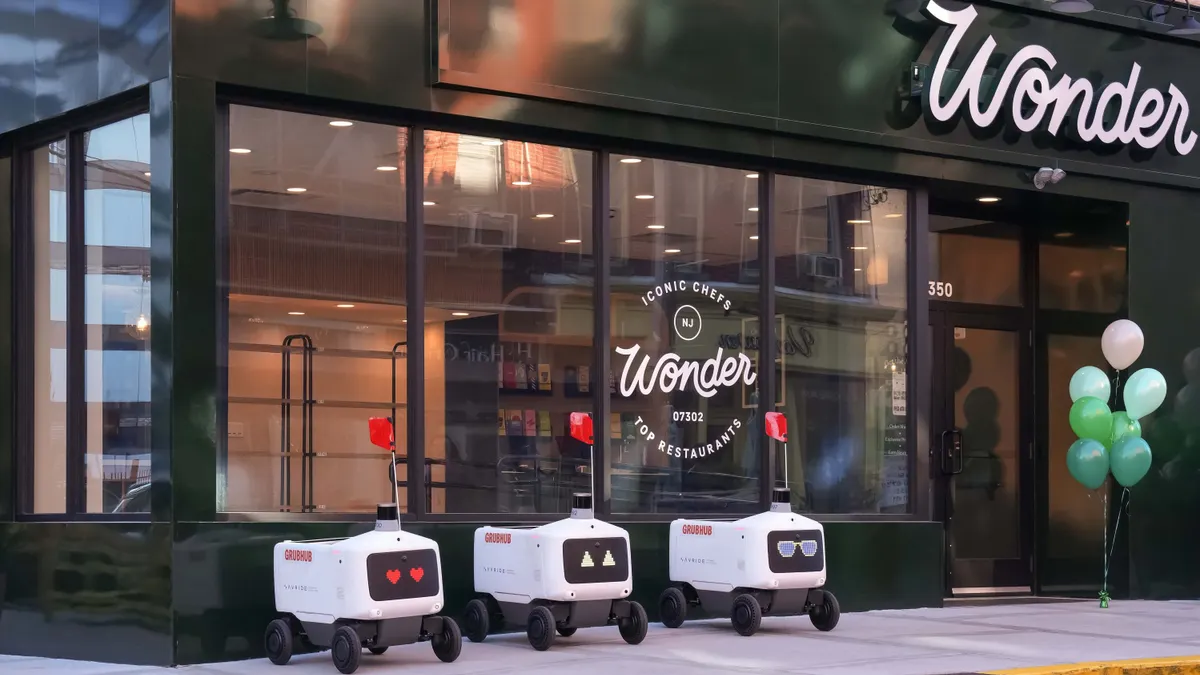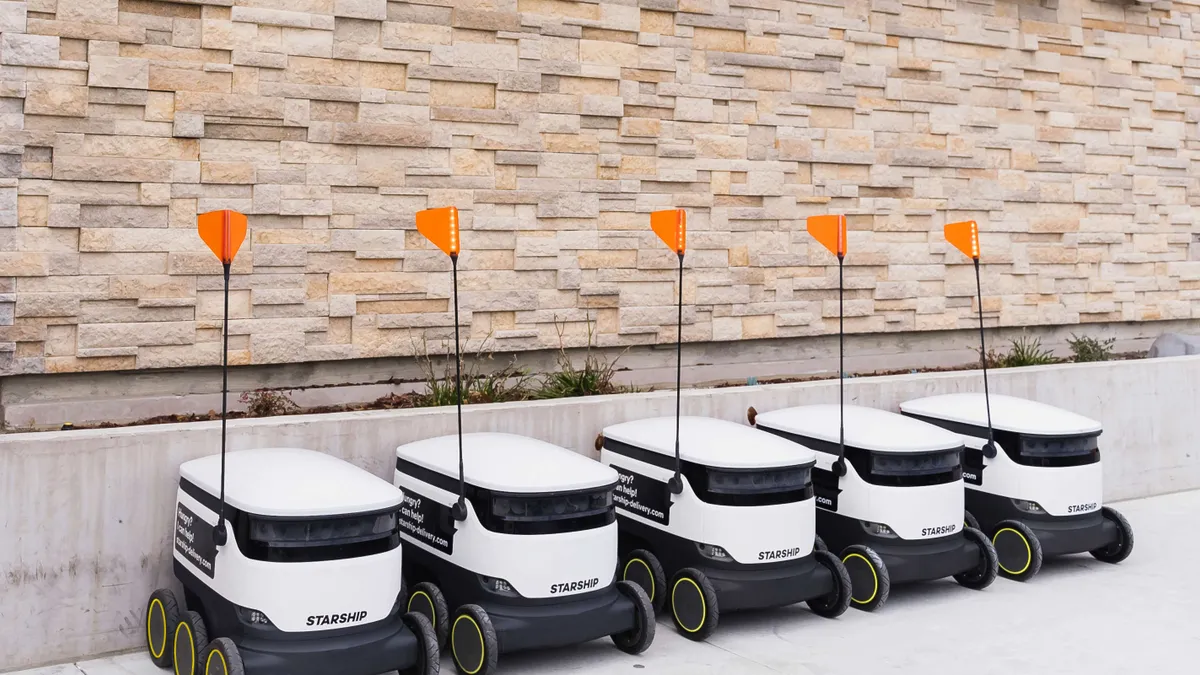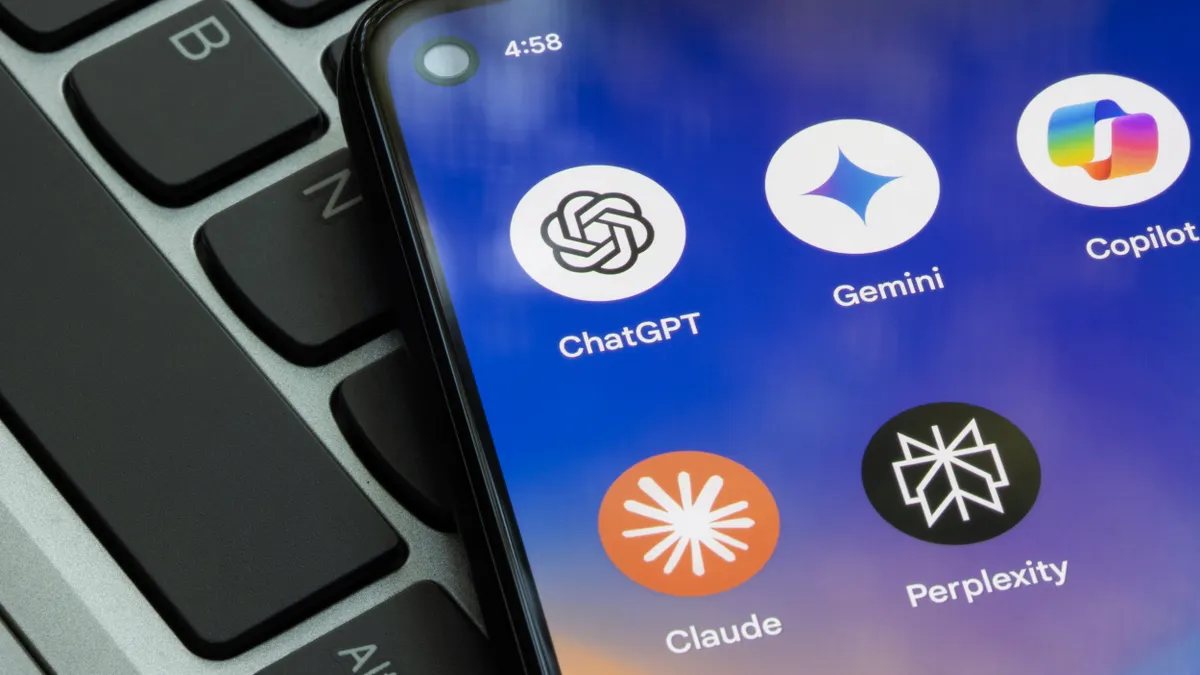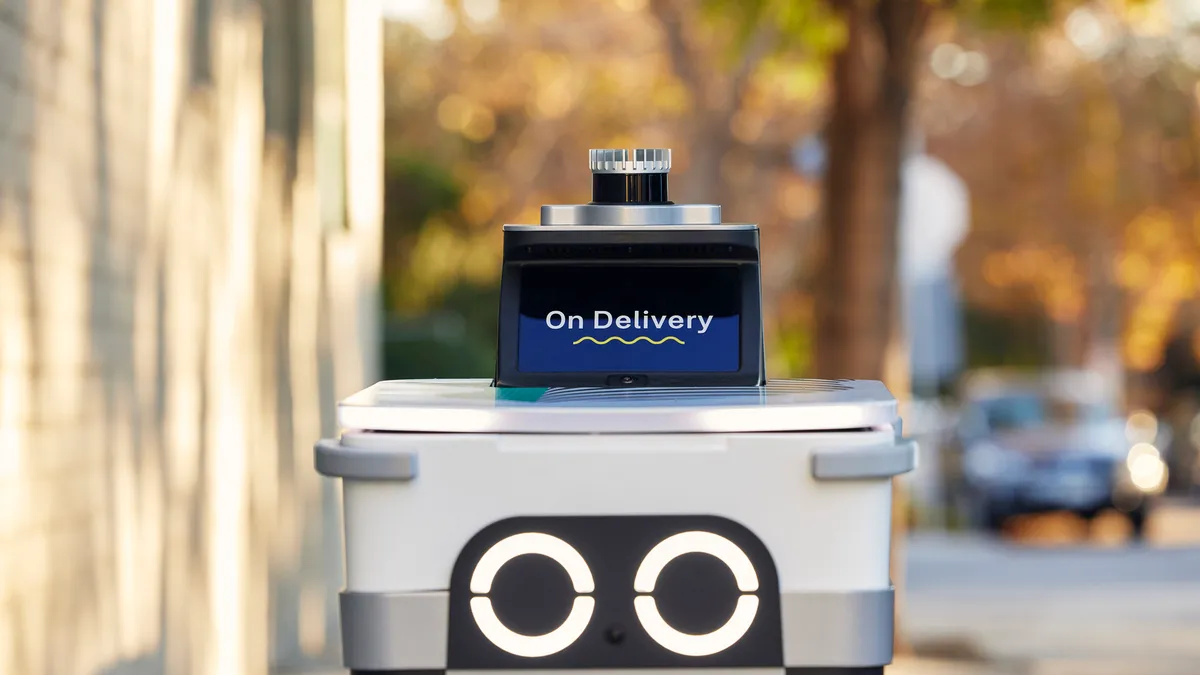As ghost restaurants haunt the American market in growing numbers, a second iteration of these delivery-only concepts is brewing. Looking to differentiate from rivals and drive fresh revenue, delivery platforms are partnering with celebrity chefs and lifestyle brands to launch flashy, limited-time restaurants with serious star power.
Last fall, Grubhub launched two such brands with the help of restaurant group Lettuce Entertain You. In August of of 2019, the companies launched Whole30’s first branded restaurant that offers diet-compliant lunches and dinners online for delivery exclusively through Grubhub. A few weeks later, Lettuce and Grubhub announced a partnership with Bon Appetit to create a virtual restaurant called Bon Appetit, Delivered, which features the most popular dishes from the brand’s magazine, website and Instagram feed.
Then Uber jumped in. In late September 2019, Uber Eats teamed up with Rachael Ray to open a limited-time, 10-city virtual kitchen featuring recipes from the celebrity chef’s new cookbook. Earlier this month, Uber Eats also launched a “Breaking Bad”-themed virtual restaurant, Los Pollos Hermanos.
These deals are a win-win for delivery platforms looking to gobble up more market share and for non-restaurant companies looking to grow brand awareness, Morgane Richert, senior foodservice analyst at GlobalData told Restaurant Dive.
"For the Rachael Ray/Uber Eats partnership, for example, it makes her food more accessible and more people will likely download the Uber Eats app because of it," she said. "The delivery companies have to think about getting more users to use their app and this is incentivizing people to do so. It is definitely about differentiation."
Interest from brands and celebrities outside of the restaurant space makes sense, since investment opportunity in delivery-only concepts abounds. Sixty-percent of restaurant meals are consumed off-premises, and these off-premise channels are expected to account for up to 80% of the industry’s growth by 2025, according to research from the National Restaurant Association.
"For the Rachael Ray/Uber Eats partnership, for example, it makes her food more accessible and more people will likely download the Uber Eats app because of it... It is definitely about differentiation."

Morgane Richert
Senior food analyst, GlobalData
Virtual restaurants also offer significantly lower real estate and menu innovation costs, giving both delivery platforms and their partners the opportunity to experiment with new branded concepts with little risk. As operators navigate cost pressures like labor, saving on occupancy rates — which can take up to 8% to 10% of a restaurant's gross sales — can ease a significant burden on a low-margin business. And while traditional restaurants can risk around $800,000 to test new menu items, if a menu fails at a ghost restaurant, it costs about $25,000, according to Fast Company.
Though limited-time partnerships in this space are relatively new, this co-branded iteration within the segment could have staying power, Richert suggested.
“The Rachael Ray partnership is a publicity stunt, but it also allows the ability to test things in a really short period of time to see if a cuisine is a trend or a fad, or to see if the Whole30 demand is really there for delivery,” Richert said. “At the end of the day, it doesn’t come at a huge cost to them and their partners to find out and to be nimble in a way restaurants can’t be.”
For Uber, the brand can also draw from its experience as a first mover in the ghost restaurant landscape. Kristen Adamowski, virtual restaurants lead at Uber Eats, told Restaurant Dive that the company began rolling out ghost restaurants in 2017 to “fill selections gaps between supply and demand.” In the fall of 2019, the company operated 2,100 virtual kitchens in the U.S. and Canada, and about 5,000 total globally.
Virtual restaurants have been a focus for Uber because they enable the company to leverage its technology and insights to help restaurants unlock new opportunities, increase sales and reach new customers without incurring the large costs associated with opening a brick-and-mortar location, Adamowski said.
Today, @rachaelray launches her first-ever restaurant, Rachael Ray to Go—exclusively on Uber Eats. ???? You can now order dishes straight from her new cookbook, Rachael Ray 50, in select cities. ✨ Yum-O! pic.twitter.com/Jgd13zByXN
— Uber Eats (@UberEats) October 17, 2019
Access, diversification and cross-promotional benefits
Perhaps the biggest benefit of these types of partnerships is providing access to brands or concepts that didn't exist before. Re-creating a recipe from Rachael Ray might not always be feasible for time-crunched consumers, for example.
“Rachael Ray is a rare talent — a household name who has achieved major success without ever owning a restaurant. Aside from cooking her food at home, her fans have never been able to taste her food until now,” Adamowski said.
But these extensions aren’t just about accessibility, but also differentiation and added revenue.
“Partnering with brands like Whole30 and Bon Appetit gives us the chance to provide our diners with new, exclusive options. Diners will always have their favorite go-to restaurants, but these concepts give diners the opportunity to try something new from the names they know and love,” Padma Rao, vice president of special projects at Grubhub, told Restaurant Dive.
This opportunity is also why Lettuce Entertain You entered a partnership with Grubhub, Bon Appetit and Whole30 for these virtual kitchen concepts.
“We think that accessibility is unique for both the Whole30 and Bon Appetit partnerships. Not everyone on the Whole30 diet has time to cook every single meal. Not everyone has the opportunity to cook Bon Appetit’s recipes,” Scott Barton, executive partner and divisional president of Lettuce Entertain You, told Restaurant Dive. “This gives people the opportunity to do that.”
There is no doubt a cross-promotional opportunity here as well. Rachael Ray has 4.4 million Twitter followers, for example, while Bon Appetit has 3.2 million. The Whole30 website serves 2 million unique visitors a month. Those are big exposure opportunities for Grubhub and Uber as delivery companies continue to jockey for market share.
These examples could be just the tip of the iceberg of potential. Rachael Ray is hardly the only celebrity chef, and Whole30 isn’t the only specialty diet. In fact, the International Food Information Council Foundation found that 36% of Americans follow a specific diet.
"We think that accessibility is unique for both the Whole30 and Bon Appetit partnerships. Not everyone on the Whole30 diet has time to cook every single meal. Not everyone has the opportunity to cook Bon Appetit's recipes. This gives people the opportunity to do that."

Scott Barton
Executive partner and divisional president, Lettuce Entertain You
It’s clear there is symbiosis in this model; the delivery companies benefit from strong brand partnerships, while those brands benefit from the delivery and virtual kitchen infrastructure to get their food to the masses.
“Partnering with Grubhub gives brands the ability to successfully launch new concepts from their virtual kitchens by marketing to our vast diner base to drive orders and leverage our existing driver network to complete deliveries,” Rao said. “Additionally, for existing restaurants, an entirely new brick-and-mortar location may also not be economically viable. Shared kitchens and virtual restaurants can provide the convenience to drastically expand their delivery radius or create new concepts and overall business without the overhead costs of another brick-and-mortar location.”
Teaming up with Lettuce brings an additional benefit to Grubhub by working with a company that's been operating successful virtual restaurants in Chicago since 2017. Still, because of the cross-promotional opportunities with recognizable names like Whole30 and Bon Appetit, these models are different than Lettuce's previous virtual kitchens, as Barton and team have learned.
“It’s a wonderfully creative way to showcase their flavors and ingredients. [Whole30 and Bon Appetit] both have an incredible and supportive community,” he said. “We couldn’t be more proud to be serving these recipes. It’s been an enjoyable experience and the food is tremendous. At the end of the day, it’s all about the food.”
Opportunities for more diner data
Richert predicts these types of partnerships will become more common, as they provide those marketing and accessibility benefits for all players, as well as a significant amount of flexibility for trial and error. Rao seems optimistic about the growth and longevity of this subsegment as well.
“At the end of the day, it’s a win-win as our partners are driving more orders and ultimately additional revenue, while we bring more variety to our diners from brands they love,” Rao said.
And while the delivery companies are no doubt chasing more market share, their ultimate objective is gaining the data that comes from added users.
“The biggest winners with these partnerships will be the delivery companies because they’re gaining loads of consumer data and eventually they’re going to be able to map cities by demand points for different cuisines,” Richert said. “Their ultimate aim is to completely mechanize delivery so they become operators in their own rights.”
Adamowski said there is a lot of potential for similar partnerships down the line.
“We love working with chefs and restaurant partners,” she said. “Virtual restaurants provide chefs the opportunity to be creative and enjoy the benefits of opening a restaurant without the investment and resources associated with brick-and-mortar establishments.”
"The biggest winners with these partnerships will be the delivery companies because they're gaining loads of consumer data and eventually they're going to be able to map cities by demand points for different cuisines."

Morgane Richert
Senior food analyst, GlobalData
Barton is also open to more of these types of models.
“They’re exciting and the guest response has been very positive,” he said. “Food delivery is popular and I think as more people choose that experience, they’ll want it to be different and unique. We don’t want to get ahead of ourselves, but hopefully we’ll be able to introduce new opportunities like these.”
Rao goes a step further, saying that Grubhub is "actively pursuing" similar partnerships.
"Working with restaurant-adjacent brands like Whole30 and Bon Appetit is a dynamic space and one we’re actively pursuing and excited to grow," Rao said.
Because of the opportunities that have already presented themselves, Richert is comfortable calling these partnerships a subsegment of the virtual kitchen space. Not only does she predict more will pop up, she believes they could promote further virtual kitchen growth and perhaps threaten some independent restaurants.
“When you have something that is not available to anyone except through the delivery companies, that’s a big win. The end goal is to expand these a lot,” she said. “Long term, delivery companies will accumulate all of this data with a goal to use that data and create their own brands. Smaller restaurants and chains that aren’t evolving or adapting as quickly as they should be could disappear.”
Correction: In a previous version of this article, Grubhub, Lettuce Entertain You and Bon Appetit's ghost restaurant was misidentified. The brand's name is Bon Appetit, Delivered.


















